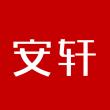
中国针灸学(第4版)
全新正版 急速发货
¥ 182.1 7.1折 ¥ 256 全新
库存17件
天津武清
认证卖家担保交易快速发货售后保障
作者程莘农 著
出版社外文出版社
ISBN9787119111582
出版时间2019-11
装帧平装
开本16开
定价256元
货号27950485
上书时间2024-12-20
- 在售商品 暂无
- 平均发货时间 14小时
- 好评率 暂无
- 最新上架
商品详情
- 品相描述:全新
- 商品描述
-
导语摘要针灸学是中国传统医学的重要组成部分,以天人合一的整体观为基础,以经络腧理论为指导,运用针具与艾叶等主要工具和材料,通过刺入、薰灼等方法刺激身体特定部位,以调节人体平衡状态而达到保健和治疗的传统知识与实践。为了满足针灸教学,促进针灸学术交流,提高针灸临床疗效,扩大针灸传播,推动针灸规范化、现代化、化,在美国、澳大利亚、加拿大等国家的针灸学者的建议下,中国中医科学院程莘农传承工作室组成专家团队对《中国针灸学》进行了修订。1.对位的定位和命名,按照2008年世界卫生组织西太平洋地区《针灸经定位》标准,进行了修订和统一。2.关于腧的部位和主治,增加解剖学描述,腧的主治按照《中华人民共和国国家标准:腧主治(GB/T30233-2013)》进行表述。3.对于针灸用具的选择,增加了针灸针消毒技术章节和不同针具的介绍,包括2014年2月标准化组织正式出版的《ISO17218:2014一次性使用无菌针灸针》等
目录
Revision Note
Preface to the Revised Edition(1999)
Preface(1987)
Chapter Ⅰ A Brief History of Chinese Acupuncture and Mobustion
Ⅰ.THE ORIGIN OF ACUPUNCTURE AND MOXIBUSTION
Ⅱ.THE ACADEMIC ACCOMPLISHIMENTS OF ANCIENT ACUPUNCTURE AND MOXIBUSTION
Ⅲ.MODERN DECLINE AND NEW LIFE OF ACUPUNCTURE AND MOXIBUSTION
Ⅳ.REJUVENATION OF ACUPUNCTURE AND MOXIBUSTION IN NEW CHINA
Ⅴ.THE DISSEMINATION OF ACUPUNCTURE AND MOXIBUSTION TO THE WORLD
Chapter 2 Yin and Yang,and the Five Elements
Ⅰ.YIN AND YANG
1.Basic Knowledge of the Theory of Yin and Yang
2.Application of the Theory of Yin and Yang in Traditional Chinese Medicine
Ⅱ.THE FIVE ELEMENTS
1.Classification of Phenomena According to the Five Elements
2.Law of Movement of the Five Elements
3.Application of the Theory of the Five Elements in Traditional Chinese Medicine
Chapter 3 The Zang-Fu Organs
1.Ancient anatomical knowledge.
2.Observation of physiological and pathological phenomena.
3.The summary of rich exprience obtained through lengthy clinical practice.
Ⅰ.THE FIVE ZANG ORGANS
1.The Heart
2.The Liver
3.The Spleen
4.The Lung
5.The Kidney
Ⅱ.THE SIX FU ORGANS
1.The Gallbladder
2.The Stomach
3.The Small Intestine
4.The Large Intestine
5.The Bladder
6.The Triple Energizer
Ⅲ.THE EXTRA FU ORGANS
1.The Brain
2.The Uterus
Ⅳ.THE RELATIONSHIPS AMONG THE ZANG-FU ORGANS
1.The Relationships among the Zang Organs
2.The Relationship between the Zang and the Fu Organst1 AIOM
3.The Relationships among the Fu Organs
Chapter 4 Qi,Blood and Body Fluid
Ⅰ.QI
1.Classification and Production of Qi
2.Functions of Qi
Ⅱ.BLOOD
1.Formation and Circulation of Blood
2.Functions of Blood
Ⅲ.BODY FLUID
1.Formation and Distribution of Body Fluid
2.Functions of Body Fluid(Jin ye)
Ⅳ.THE RELATIONSHIP BETWEEN QI,BLOOD AND BODY FLUID
1.The Relationship between Qi and Blood
……
Chapter 5 The Meridians and Collaterals
Chapter 6 An Introduction to Acupuncture Points
Chapter 7 Acupuncture Points
Chapter 8 Aetiology and Pathogenesis
Chapter 9 Diagnostic Methods
Chapter 10 Differentiation of Syndromes
Chapter 11 Acupuncture and Mobustion Techniques
Chapter 12 A General Introduction to Acupuncture Treatment
Chapter 13 Internal Diseases
Chapter 14 Gynecological Diseases
Chapter 15 Pediatric Diseases
Chapter 16 External Diseases
Chapter 17 Diseases of Eyes,Ears,Nose and Throat
Chapter 18 Beauty-Damaging Diseases
Bibliography
Standard Nomenclature of the Acupuncture Points of the Fourteen Meridians
Index
内容摘要针灸学是中国传统医学的重要组成部分,以天人合一的整体观为基础,以经络腧理论为指导,运用针具与艾叶等主要工具和材料,通过刺入、薰灼等方法刺激身体特定部位,以调节人体平衡状态而达到保健和治疗的传统知识与实践。为了满足针灸教学,促进针灸学术交流,提高针灸临床疗效,扩大针灸传播,推动针灸规范化、现代化、化,在美国、澳大利亚、加拿大等国家的针灸学者的建议下,中国中医科学院程莘农传承工作室组成专家团队对《中国针灸学》进行了修订。1.对位的定位和命名,按照2008年世界卫生组织西太平洋地区《针灸经定位》标准,进行了修订和统一。2.关于腧的部位和主治,增加解剖学描述,腧的主治按照《中华人民共和国国家标准:腧主治(GB/T30233-2013)》进行表述。3.对于针灸用具的选择,增加了针灸针消毒技术章节和不同针具的介绍,包括2014年2月标准化组织正式出版的《ISO17218:2014一次性使用无菌针灸针》等
相关推荐
— 没有更多了 —






















以下为对购买帮助不大的评价